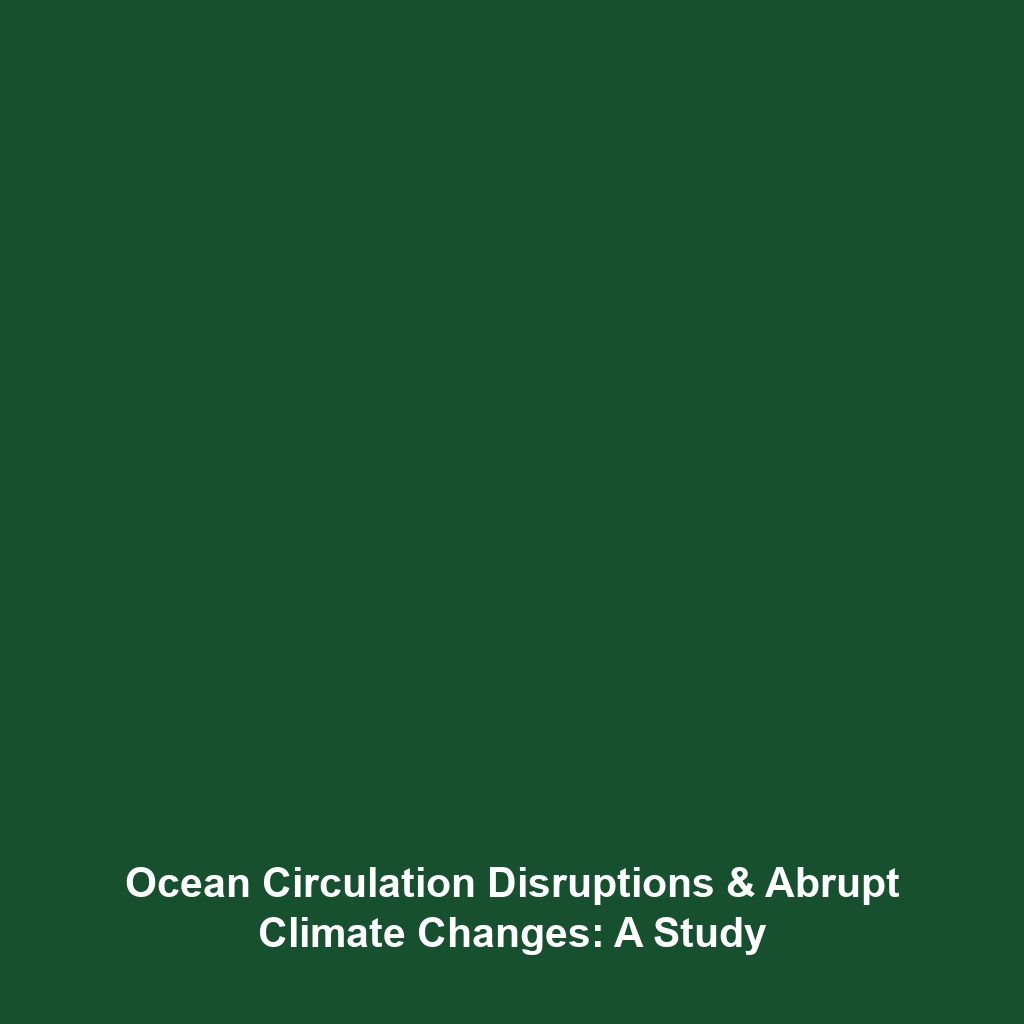Disruptions in Ocean Circulation and Their Link to Abrupt Climate Changes
Introduction
Disruptions in ocean circulation are critical factors in understanding abrupt climate changes throughout Earth’s history. One notable event linked to these disruptions is the Younger Dryas, which occurred approximately 12,900 years ago. This event represents a dramatic return to glacial conditions during a time that was characterized by generally warming temperatures. Exploring the relationship between ocean circulation patterns and climate events such as the Younger Dryas provides significant insights into climate dynamics and contributes to our understanding of Climate History. By analyzing these past occurrences, researchers can better anticipate future climate shifts, making this topic increasingly relevant in today’s context.
Key Concepts
Understanding Ocean Circulation
Ocean circulation is driven by various factors, including wind, salinity, temperature gradients, and the Earth’s rotation. Disruptions can occur due to sudden shifts in temperature or salinity, which may lead to significant impacts on weather patterns and global temperatures.
The Younger Dryas Event
The Younger Dryas represents one of the most well-documented abrupt climate changes in Earth’s history. It serves as a prime example of how disruptions in ocean circulation contribute to rapid climate shifts. Through studies of sediment cores and paleoclimate data, scientists have been able to reconstruct the series of events leading up to and following the Younger Dryas.
Applications and Real-World Uses
The study of disruptions in ocean circulation and their link to abrupt climate changes has practical applications across various fields:
- Climate Models: Enhanced understanding of historical climate events informs the development of more accurate climate models.
- Disaster Preparedness: Insights into past climate shifts guide planning and preparedness for future weather extremes.
- Environmental Policy: Knowledge of ocean circulation impacts aids policymakers in crafting informed environmental regulations.
Current Challenges
Studying disruptions in ocean circulation presents several challenges and issues within Climate History:
- Data Limitations: Lack of comprehensive data from certain regions can obscure the full picture of past climate events.
- Complexity of Systems: Climate systems are multifaceted and understanding the interplay between different components is challenging.
- Technological Constraints: Many groundbreaking technologies necessary for these studies are still in development stages.
Future Research and Innovations
Future research on disruptions in ocean circulation is poised to explore advanced methodologies and technologies:
- Next-Gen Climate Models: Utilization of AI and machine learning to enhance predictive capabilities of climate models.
- High-Resolution Climate Data: Improved satellite technology will enable more detailed monitoring of oceanic conditions and shifts.
- Interdisciplinary Approaches: Collaborative research across geology, oceanography, and climatology to provide holistic insights.
Conclusion
Disruptions in ocean circulation are integral to understanding abrupt climate changes, with significant historical events like the Younger Dryas illustrating their impact on global climate dynamics. Continued research in this area not only sheds light on Climate History but also prepares us for future climate-related challenges. For those interested in further exploring climate dynamics, resources on paleoclimate studies and oceanography are invaluable. Discover more about past climate events and their implications for today’s environmental landscape.

Leave a Reply